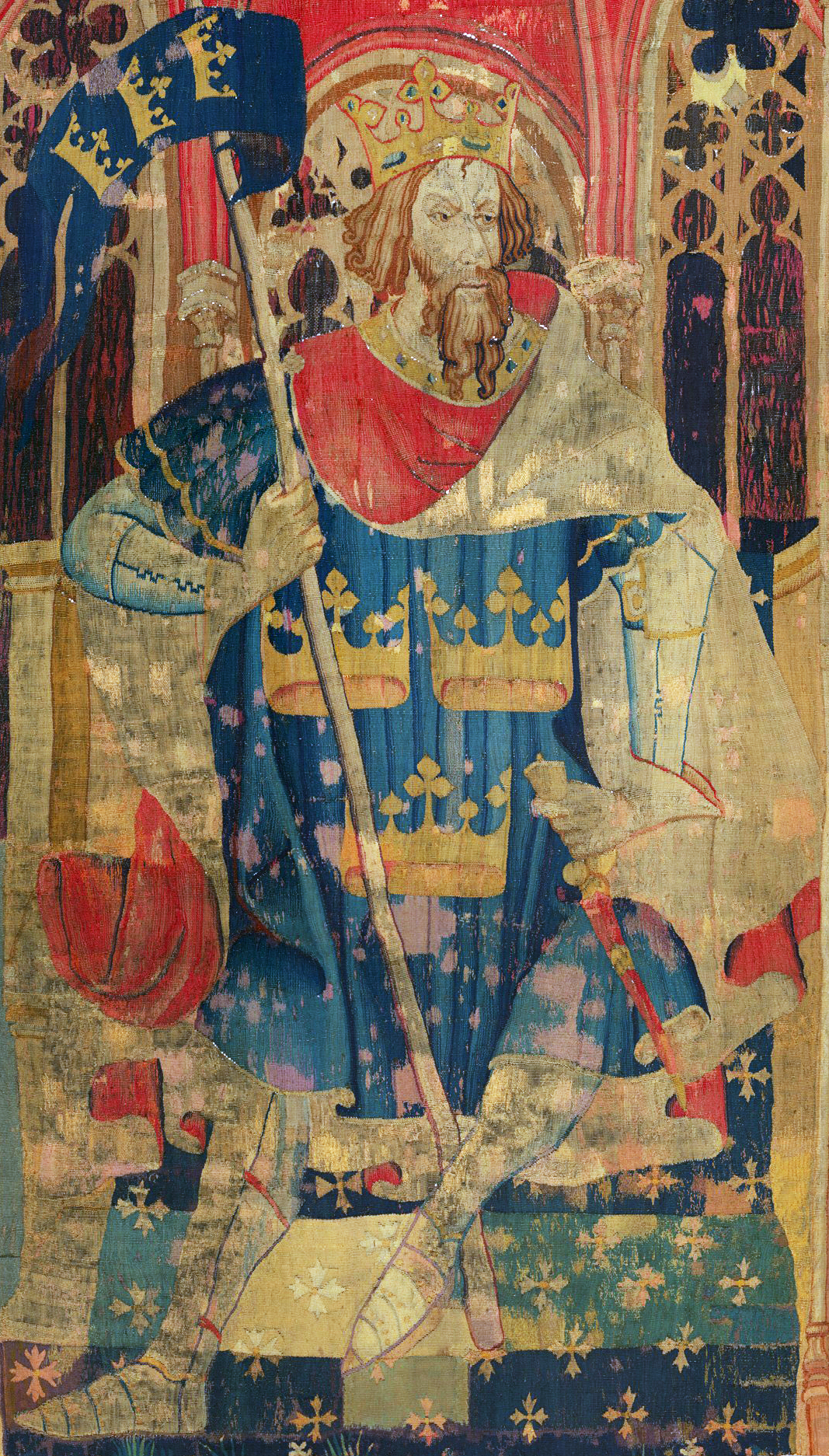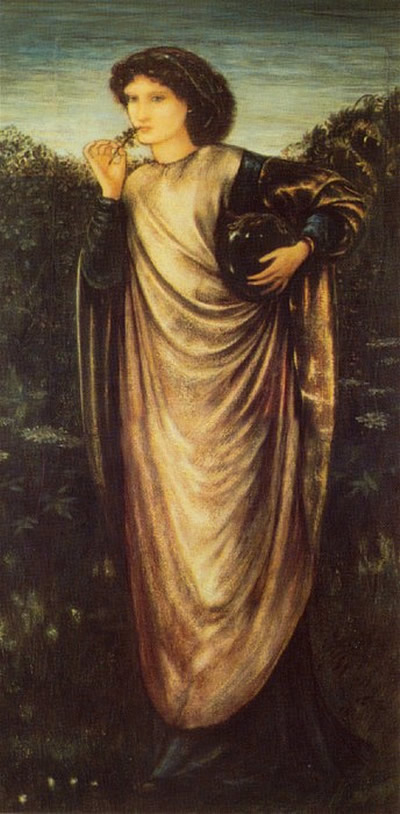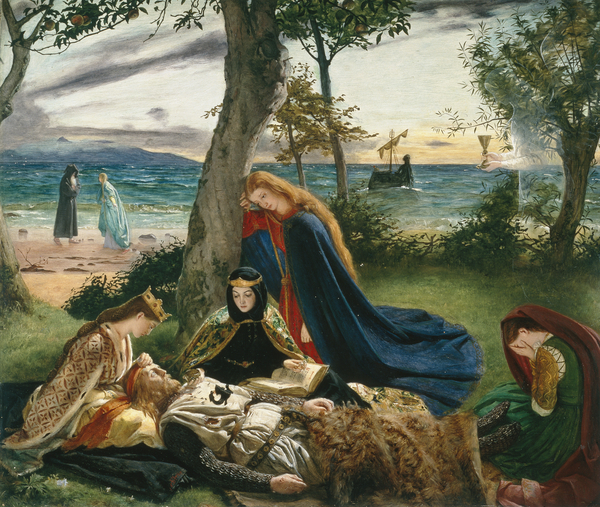|
Camelot
Camelot is a legendary castle and Royal court, court associated with King Arthur. Absent in the early Arthurian material, Camelot first appeared in 12th-century French romances and, since the Lancelot-Grail cycle, eventually came to be described as the fantastic capital of Arthur's realm and a symbol of the Arthurian world. Medieval texts locate it somewhere in Great Britain and sometimes associate it with real cities, though more usually its precise location is not revealed. Most scholars regard it as being entirely fictional, its unspecified geography being perfect for chivalric romance writers. Nevertheless, arguments about the location of the "real Camelot" have occurred since the 15th century and continue today in popular works and for tourism purposes. Etymology The name's derivation is uncertain. It has numerous different spellings in medieval French Arthurian romances, including ''Camaalot'', ''Camalot'', ''Chamalot'', ''Camehelot'' (sometimes read as ''Camchilot''), ' ... [...More Info...] [...Related Items...] OR: [Wikipedia] [Google] [Baidu] |
Guinevere
Guinevere ( ; ; , ), also often written in Modern English as Guenevere or Guenever, was, according to Arthurian legend, an early-medieval queen of Great Britain and the wife of King Arthur. First mentioned in literature in the early 12th century, nearly 700 years after the purported times of Arthur, Guinevere has since been portrayed as everything from a fatally flawed, villainous, and opportunistic traitor to a noble and virtuous lady. The variably told motif of abduction of Guinevere, or of her being rescued from some other peril, features recurrently and prominently in many versions of the legend. The earliest datable appearance of Guinevere is in Geoffrey of Monmouth's pseudo-historical British chronicle ''Historia Regum Britanniae'', in which she is seduced by Mordred during his ill-fated rebellion against Arthur. In a later medieval Arthurian romance tradition from France, a major story arc is the queen's tragic love affair with her husband's best knight and trusted f ... [...More Info...] [...Related Items...] OR: [Wikipedia] [Google] [Baidu] |
King Arthur
According to legends, King Arthur (; ; ; ) was a king of Great Britain, Britain. He is a folk hero and a central figure in the medieval literary tradition known as the Matter of Britain. In Wales, Welsh sources, Arthur is portrayed as a leader of the Sub-Roman Britain, post-Roman Britons in battles against the Anglo-Saxons in the late-5th and early-6th centuries. He first appears in two early medieval historical sources, the ''Annales Cambriae'' and the ''Historia Brittonum'', but these date to 300 years after he is supposed to have lived, and most historians who study the period Historicity of King Arthur, do not consider him a historical figure.Tom Shippey, "So Much Smoke", ''review'' of , ''London Review of Books'', 40:24:23 (20 December 2018) His name also occurs in early Welsh-language literature, Welsh poetic sources, such as ''Y Gododdin''. The character developed through Welsh mythology, appearing either as a great warrior defending Britain from human and supernatura ... [...More Info...] [...Related Items...] OR: [Wikipedia] [Google] [Baidu] |
Idylls Of The King
''Idylls of the King'', published between 1859 and 1885, is a cycle of twelve narrative poems by the English poet Alfred, Lord Tennyson (1809–1892; Poet Laureate from 1850) which retells the legend of King Arthur, his knights, his love for Guinevere and her tragic betrayal of him, and the rise and fall of Arthur's kingdom. The whole work recounts Arthur's attempt and failure to lift up mankind and create a perfect kingdom, from his coming to power to his death at the hands of the traitor Mordred. Individual poems detail the deeds of various knights, including Lancelot, Geraint, Galahad, and Balin and Balan, and also Merlin and the Lady of the Lake. There is little transition between Idylls, but the central figure of Arthur links all the stories. The poems were dedicated to the late Albert, Prince Consort. The ''Idylls'' are written in blank verse. Tennyson's descriptions of nature are derived from observations of his own surroundings, collected over the course of ... [...More Info...] [...Related Items...] OR: [Wikipedia] [Google] [Baidu] |
Morgan Le Fay
Morgan le Fay (; Welsh language, Welsh and Cornish language, Cornish: Morgen; with ''le Fay'' being garbled French language, French ''la Fée'', thus meaning 'Morgan the Fairy'), alternatively known as Morgan[n]a, Morgain[a/e], Morgant[e], Morg[a]ne, Morgayn[e], Morgein[e], and Morgue[in] among other names and spellings, is a powerful and ambiguous Magician (fantasy), enchantress from the legend of King Arthur, in which most often she and he are siblings. Early appearances of Morgan in Arthurian literature do not elaborate her character beyond her role as a goddess, a fairy , fay, a Witchcraft , witch, or a sorceress, generally benevolent and connected to Arthur as his magical saviour and protector. Her prominence increased as the legend of Arthur developed over time, as did her moral ambivalence, and in some texts there is an evolutionary transformation of her to an antagonist, particularly as portrayed in cyclical prose such as the ''Lancelot-Grail'' and the Post-Vulgate Cyc ... [...More Info...] [...Related Items...] OR: [Wikipedia] [Google] [Baidu] |
Camulodunum
Camulodunum ( ; ), the Roman Empire, Ancient Roman name for what is now Colchester in Essex, was an important Castra, castrum and city in Roman Britain, and the first capital of the province. A temporary "wikt:strapline, strapline" in the 1960s identifying it as the "oldest recorded town in Britain" has become popular with residents and is still used on heritage roadsigns on trunk road approaches.McWhirr, Alan (1988) Roman Crafts and Industries. Published by Shire Publications LTD. () Originally the site of the Brythonic-Celtic oppidum of Camulodunon (meaning "stronghold of Camulos"), capital of the Trinovantes and later the Catuvellauni tribes, it was first mentioned by name on coinage minted by the chieftain Tasciovanus some time between 20 and 10 BC. The Roman town began life as a Castra, Roman legionary base constructed in the AD 40s on the site of the Brythonic-Celtic fortress following its conquest by the Emperor Claudius. After the early town was destroyed during the Boudic ... [...More Info...] [...Related Items...] OR: [Wikipedia] [Google] [Baidu] |
Avalon
Avalon () is an island featured in the Arthurian legend. It first appeared in Geoffrey of Monmouth's 1136 ''Historia Regum Britanniae'' as a place of magic where King Arthur's sword Excalibur was made and later where Arthur was taken to recover from being gravely wounded at the Battle of Camlann. Since then, the island has become a symbol of Arthurian mythology, similar to Arthur's castle of Camelot. Avalon was associated from an early date with mystical practices and magical figures such as King Arthur's sorceress sister Morgan, cast as the island's ruler by Geoffrey and many later authors. Certain Briton traditions have maintained that Arthur is an eternal king who had never truly died but would return as the "once and future" king. The particular motif of his rest in Morgan's care in Avalon has become especially popular. It can be found in various versions in many French and other medieval Arthurian and other works written in the wake of Geoffrey, some of them also linkin ... [...More Info...] [...Related Items...] OR: [Wikipedia] [Google] [Baidu] |
Knights Of The Round Table
The Knights of the Round Table (, , ) are the legendary knights of the fellowship of King Arthur that first appeared in the Matter of Britain literature in the mid-12th century. The Knights are a chivalric order dedicated to ensuring the peace of Arthur's kingdom following an early warring period, entrusted in later years to undergo a mystical quest for the Holy Grail. The Round Table at which they meet is a symbol of the equality of its members, who range from sovereign royals to minor nobles. The various Round Table stories present an assortment of knights from all over Great Britain and abroad, some of whom are even from outside of Europe. Their ranks often include King Arthur's family, Arthur's close and distant relatives, such as Agravain, Gaheris and Yvain, as well as his reconciled former enemies, like Galehaut, Pellinore and King Lot, Lot. Several of the most notable Knights of the Round Table, among them Bedivere, Gawain and Sir Kay, Kay, are based on older characters ... [...More Info...] [...Related Items...] OR: [Wikipedia] [Google] [Baidu] |
Matter Of Britain
The Matter of Britain (; ; ; ) is the body of medieval literature and legendary material associated with Great Britain and Brittany and the list of legendary kings of Britain, legendary kings and heroes associated with it, particularly King Arthur. The 12th-century writer Geoffrey of Monmouth's (''History of the Kings of Britain)'' is a central component of the Matter of Britain. It was one of the three great Western Literary cycle, story cycles recalled repeatedly in medieval literature, together with the Matter of France, which concerned the legends of Charlemagne and his Paladin, companions, as well as the Matter of Rome, which included material derived from or inspired by classical mythology and classical antiquity, classical history. Its pseudo-chronicle and chivalric romance works, written both in prose and verse, flourished from the 12th to the 16th century. Name The three "matters" were first described in the 12th century by French poet Jean Bodel, whose epic ' ("Song ... [...More Info...] [...Related Items...] OR: [Wikipedia] [Google] [Baidu] |
Lancelot-Grail
The ''Lancelot-Grail Cycle'', also known as the Vulgate Cycle or the Pseudo-Map Cycle, is an early 13th-century French Arthurian legend, Arthurian literary cycle consisting of interconnected prose episodes of chivalric romance originally written in Old French. The work of unknown authorship, presenting itself as a chronicle of actual events, retells the legend of King Arthur by focusing on the love affair between Lancelot and Guinevere, the religious quest for the Holy Grail, and the life of Merlin. The highly influential cycle expands on Robert de Boron's "Little Grail Cycle" and the works of Chrétien de Troyes, previously unrelated to each other. It does that by supplementing them with additional details and side stories, as well as lengthy continuations, while tying the entire narrative together into a coherent single tale. There is no unity of place within the narrative, but most of the episodes take place in Arthur's kingdom of Logres. One of the main characters is Arthur ... [...More Info...] [...Related Items...] OR: [Wikipedia] [Google] [Baidu] |
Chrétien De Troyes
Chrétien de Troyes (; ; 1160–1191) was a French poet and trouvère known for his writing on King Arthur, Arthurian subjects such as Gawain, Lancelot, Perceval and the Holy Grail. Chrétien's chivalric romances, including ''Erec and Enide'', ''Lancelot, the Knight of the Cart, Lancelot'', ''Perceval, the Story of the Grail, Perceval'' and ''Yvain, the Knight of the Lion, Yvain'', represent some of the best-regarded works of medieval literature. His use of structure, particularly in ''Yvain'', has been seen as a step towards the modern novel. Life Little is known of his life, but he seems to have been from Troyes or at least intimately connected with it. Between 1160 and 1172 he served (perhaps as herald-at-arms, as Gaston Paris speculated) at the court of his patroness Marie of France, Countess of Champagne, daughter of Louis VII of France, King Louis VII and Eleanor of Aquitaine, who married Henry I, Count of Champagne, Count Henry I of Champagne in 1164. Later, he served t ... [...More Info...] [...Related Items...] OR: [Wikipedia] [Google] [Baidu] |
Chivalric Romance
As a literary genre, the chivalric romance is a type of prose and verse narrative that was popular in the noble courts of high medieval and early modern Europe. They were fantastic stories about marvel-filled adventures, often of a chivalric knight-errant portrayed as having heroic qualities, who goes on a quest. It developed further from the epics as time went on; in particular, "the emphasis on love and courtly manners distinguishes it from the ''chanson de geste'' and other kinds of epic, in which masculine military heroism predominates." Popular literature also drew on themes of romance, but with ironic, satiric, or burlesque intent. Romances reworked legends, fairy tales, and history to suit the readers' and hearers' tastes, but by they were out of fashion, and Miguel de Cervantes famously burlesqued them in his novel ''Don Quixote''. Still, the modern image of "medieval" is more influenced by the romance than by any other medieval genre, and the word ''medie ... [...More Info...] [...Related Items...] OR: [Wikipedia] [Google] [Baidu] |
Battle Of Camlann
The Battle of Camlann ( or ''Brwydr Camlan'') is the legendary final battle of King Arthur, in which Arthur either died or was mortally wounded while fighting either alongside or against Mordred, who also perished. The original legend of Camlann, inspired by a purportedly historical event said to have taken place in the early 6th-century Britain, is only vaguely described in several medieval Welsh texts dating from around the 10th century. The battle's much more detailed depictions have emerged since the 12th century, generally based on that of a catastrophic conflict described in the pseudo-chronicle ''Historia Regum Britanniae''. The further greatly embellished variants originate from the later French chivalric romance tradition, in which it became known as the Battle of Salisbury, and include the 15th-century telling in '' Le Morte d'Arthur'' that remains popular today. Etymology The name may derive from a Brittonic ''*Cambo-landa'' ("crooked/twisting-enclosure" or "crook ... [...More Info...] [...Related Items...] OR: [Wikipedia] [Google] [Baidu] |









